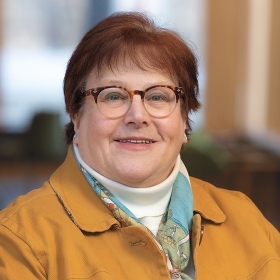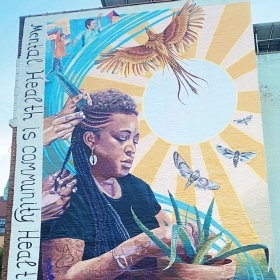A gathering of herons in Mississippi provides a vision of community for a group of parents and their young children.
We have been walking through the Mississippi swamp for hours when someone, a child, I think, finally spots the first heron, its silhouette unmistakable: an inky S-shaped brushstroke set against an ombre sky.
“There!”...
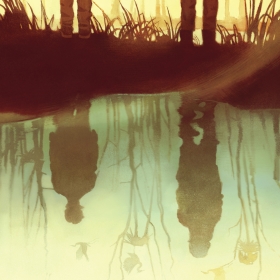
We have been walking through the Mississippi swamp for hours when someone, a child, I think, finally spots the first heron, its silhouette unmistakable: an inky S-shaped brushstroke set against an ombre sky.
“There!” A finger points to a sudden movement in the treetops right above us.
“There! There!” someone else says, as another and then another opens up like an umbrella and soars above the canopy to the far side of the creek that cuts through the swamp.
We have come together at a moment’s notice—six mothers and more than 20 children—because someone got a call early that April morning that a great blue heron rookery had been sighted not 20 minutes from our home in Oxford.
By this time, we had been walking in circles for hours, guided by a snapshot of the rookery and some loose GPS coordinates. It didn’t matter that we hadn’t seen a single heron yet, although we had crossed paths with a very large snake. Or that we had to move at a snail’s pace, calibrated for the youngest among us, as we wound our way through a tangle of ferns and muscadine and greenbrier.
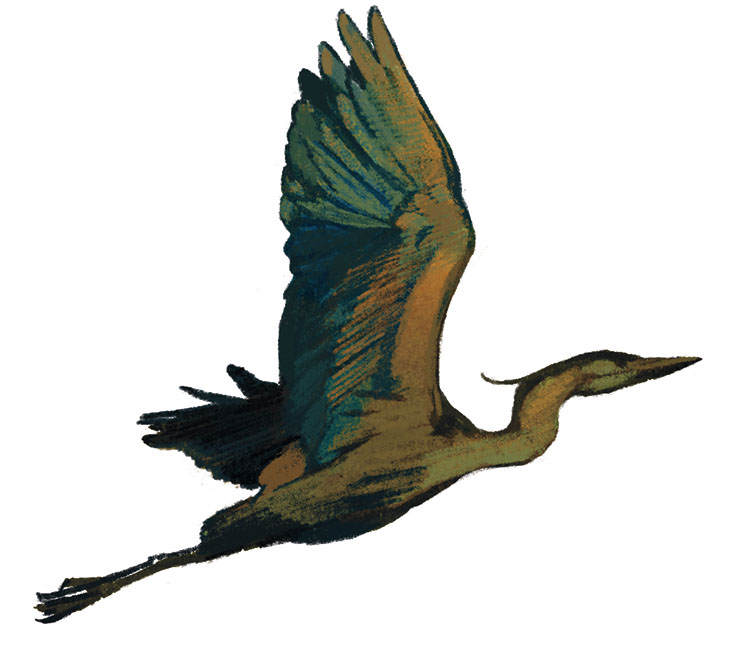
Everywhere the roots of the bald cypress trees threatened to trip us with their knobbly projections, called “knees,” that protrude from the surface of the soil, some as high as two feet. Yet the children, nimble as cats, skipped along their tapering tops and managed to keep their feet dry. Mostly.
At one point we tried wading across the creek, with daypacks and small children carried high above our heads. Someone lost a shoe. By the time we mothers realized the water was too deep to traverse, the current too strong, the kids had already given up on our search and decided to go for a swim. All anyone really needed was fellowship and adventure and the promise of herons on a lemony-yellow spring day.
As is so often the case, it is only when you stop looking that you finally see: the shadow that flies before the trees. The compass rights itself, and the caravan shifts south, where it had been tending west.
We hear them before we see them. Dozens and dozens of herons 30 feet up in a collection of nests, several to each tree. A heron colony is an active, cacophonous place, busy as an airport on a Friday. They take off and land continuously, never seeming to graze so much as a feather, though their wingspan is a magnificent 6 feet wide, and these woods are dense. Returning to the nest, a precarious Jenga tower of sticks at the top of a leafless tree, they greet each other by flapping their great wide wings and clapping their beaks like castanets. They burp and hiss and croak.
Through my binoculars, I can make out an individual in its bright breeding plumage: a mantle of slate blue, a black stripe above a yellow eye, a ponytail plume bouncing above a slender neck. It perches on impossibly long legs on a branch no thicker than a pencil. There are dinosaurs among us.
Having only ever seen the lone heron, waiting stone-still by the water’s edge, I assumed they were silent, solitary creatures. But every spring, all across the continent, they come together in communities such as these, some as many as 100 strong. Rookeries seem rare—how many people can claim to have seen even one in a whole lifetime?—but, really, they are all around us, hiding in plain sight. Though our walkabout felt epic, we were, in fact, not a hundred yards from a popular fishing hole at the center of a northern Mississippi state park.
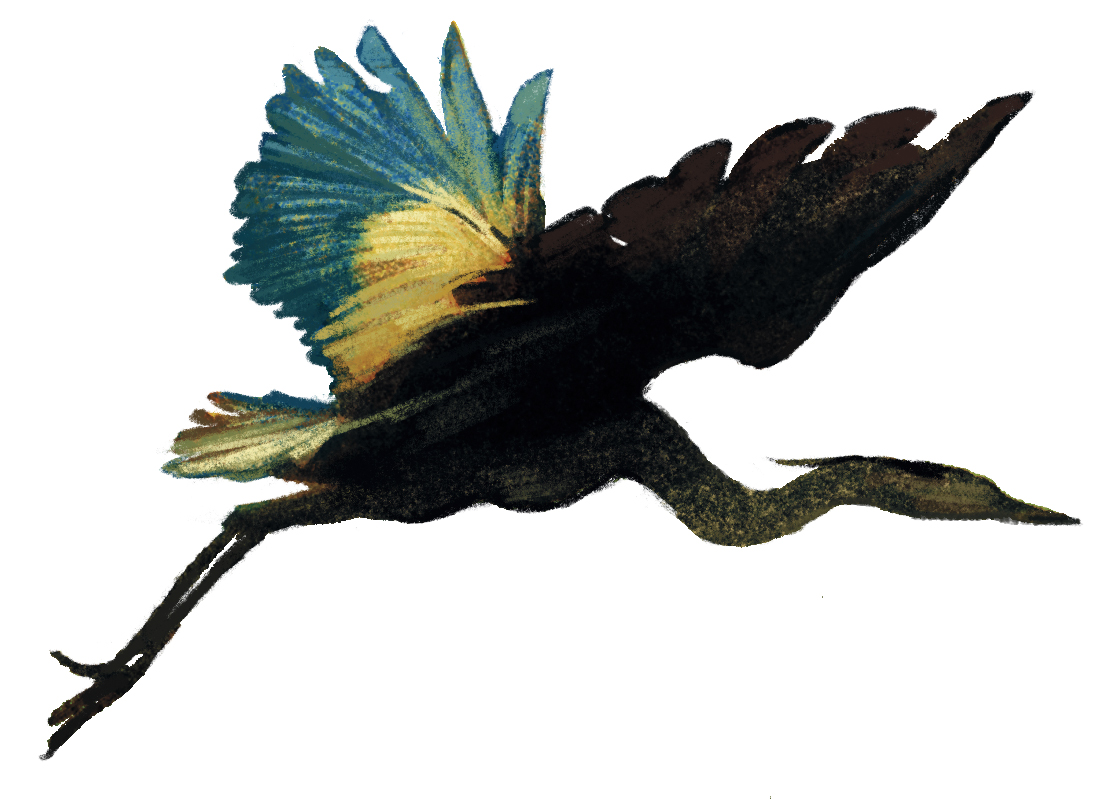
No one knows exactly why herons breed in colonies. One theory is that the community communicates an advantage when hunting. A heron might need to fly as far afield as several miles in search of its dinner of fish, crab, or frogs. Another possibility is that these large colonies increase the survival rate of chicks by raising the alarm and protecting against predators: hawks and eagles from above, raccoons and foxes from below. There is safety in numbers.
But I know why I am drawn to the community gathered around me, which had been meeting once a week in our local woods for years before I stumbled upon it. A writer—solitary by nature—I nonetheless feel a biological need to raise my children alongside these women. We are all odd birds here: an artist, an activist, a midwife in training, and women whose avocations don’t fit neatly into any single description. The fact that we all homeschool our children brought us together in the beginning, marked us as a bande à part. That we have found our most challenging work to be within the home has kept us coming back for weekly communion over our common struggles, trying to feel our way as we raise families in a world that seems to have lost the instinct for it. Like many mothers these days, we are raising families miles—and mindsets—away from where we grew up.
And then a husband loses a job, a child has an accident. There is a sudden, unexpected loss. And you realize what a rookery is really for.
Yet these communities are ephemeral. They fall victim to their own success, in a way. The same birds come back to the same nests, improving upon them year after year, but the guano left behind by so many birds slowly kills the nesting trees. Eventually, the trees fall down, and the herons must move on.
I can sense a shift in the air that tells me this season of ours is drawing to a close as well. Our weekly woodland romps have become less and less regular, as each of us is pulled toward careers or advanced degrees, as older children fly the nest. My youngest child, now 2, is almost the last of our brood.
We are tired, we are wet. Our feet have been steeping in the tea-colored water of a cypress swamp all day, yet we are happy. Never have so many women and children sat together in stunned silence for so long. Never have I felt more content with a day well spent. Soon we sense that our presence is felt by the birds nearby, and we do not wish to disturb their sanctuary. Like the herons who leave the rookery at summer’s end, we agree without speaking that it is time to go.
Sarah Ligon ’03 is a freelance writer and mother of four in Oxford, Miss., where she will begin an M.F.A. in creative writing at the University of Mississippi this fall.

